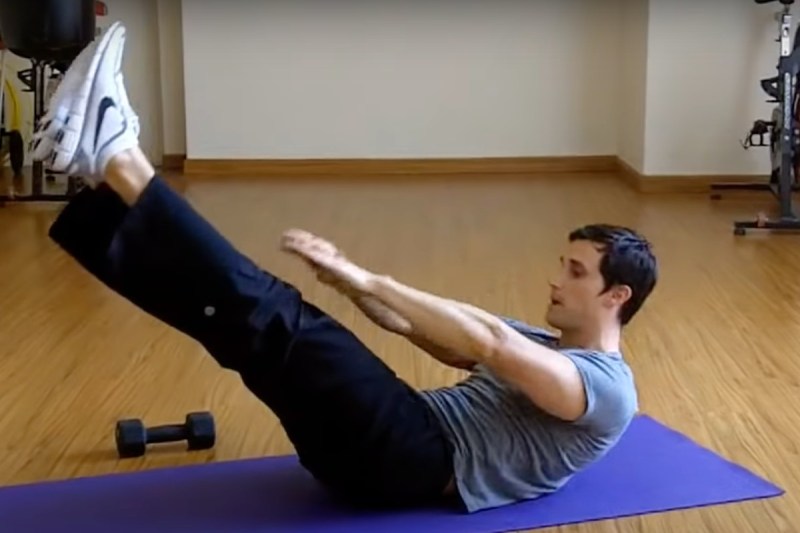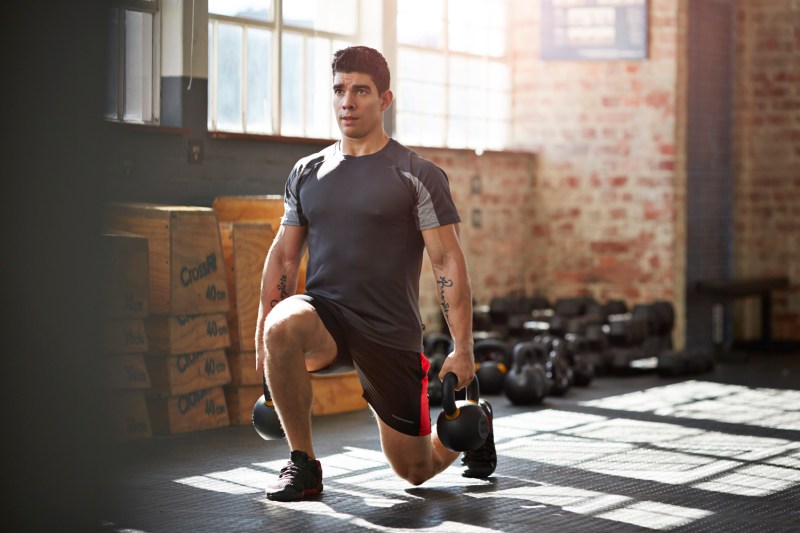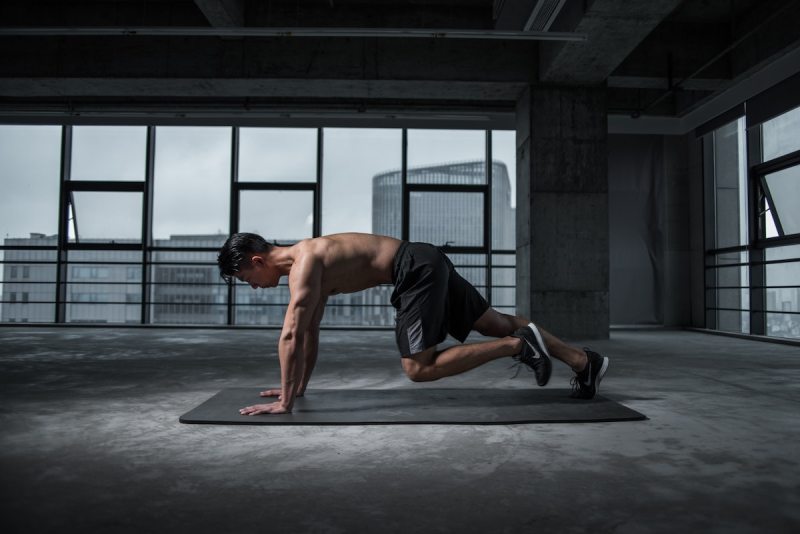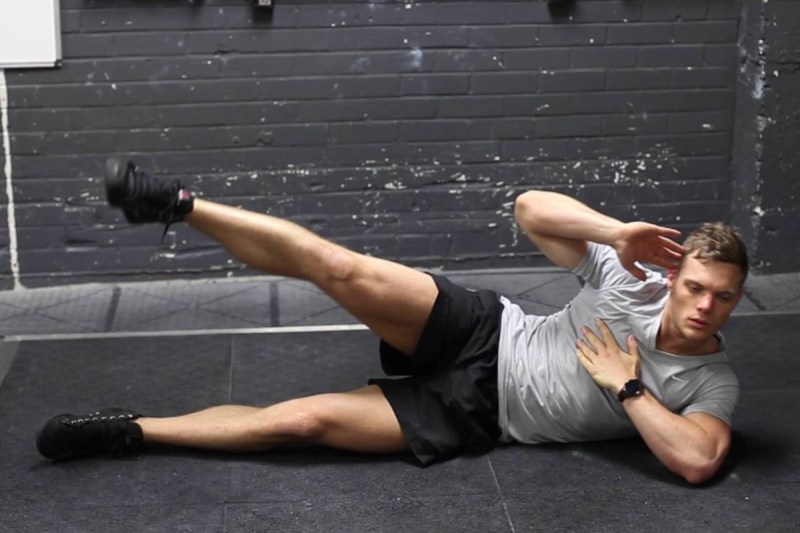Want to skip the commute to the gym and save money while still getting ripped? Try doing HIIT exercises at home! High-intensity work with few breaks in between will benefit you by allowing you to break a serious sweat while developing your upper body, lower body, and abdominal muscles simultaneously.
This guide, featuring diverse burners, will have your body pumped in no time.

Burpees
One of the best of any HIIT exercises, burpees work the core, upper body, and legs while driving your cardio through the roof — as long as they’re done correctly. Burpees are a two-part exercise that targets the calves, chest, triceps, shoulder, biceps, glutes, and lats.
To perform burpees, begin standing before bending into a partial squat position, hands on the floor. Step or hop your feet back while keeping your spine straight, and get into a plank position, feet even with your pecs. Ease down with your elbow until you touch the ground with your chest. Push back up, frog jump to land with your feet between your hands, and then leap up with your hands raised in the air.
Perform 8 to 15 reps, depending on your level of fitness.

V-ups
After you’ve engaged your exterior muscles, it’s time to kick in your core. With the right form, there are few exercises that burn your abs as much as V-ups. They also challenge your balance and coordination by lifting your body up while balancing your legs and arms in the air. Bringing all of your limbs up activates the entire abdominal wall and the eight middle rectus abdominis muscles.
Begin by lying on your back and extending your arms and hands behind your head. Keep your feet together and your toes pointed away from you. With straight legs, lift up with your abs as you simultaneously raise your shoulders and back off the floor. Keep that core tight and your limbs unbent as you reach for your toes with your hands. Get up as far as you can go without discomfort, then slowly lower your arms and legs back down in the same motion and return to the starting position.
Do 8 to 15 reps, depending on your level of fitness.

Alternating lunges
Not only will these stretch out hip flexors post-V-up, alternating lunges hit the upper legs (quads and hamstrings) and the rear end while engaging your core. Little wonder these are going to raise the heart rate and body temperature!
To do alternating lunges, begin in a standing position, and take a long step forward with one foot. With your hands at your hips, hanging down (or even harder, raised above your head), lower your hips down toward the floor as you bend your front knee. Stay elevated as you balance on your front foot and back toes with your torso upright. From this deep lunge, push up with force through your front foot, bring your back forward, and lift your body back up to standing. Follow this with a step with the opposite foot forward, knee down, and back up. That’s one rep.
Do 6 to 12 reps, depending on your level of fitness. Level up by holding a pair of weights or anything with weight. Go pro by skipping, standing, and hopping from one lunging position to the other.

Mountain climbers
Continuing to alternate between the exterior muscles and your core, it’s time to get the abs firing with fast-paced mountain climbers. In addition to engaging your quick twitch stomach and hamstring fibers, mountain climbers quite literally burn your shoulders.
Begin in a high plank, hands shoulder-width apart, fingers facing forward, slightly spread apart, arms fully extended. Make sure that your back is straight and your head is in line with your spine. From this position, pump your knees toward your chest one at a time while maintaining a still torso (and not rocking from side to side). Making sure to take even breaths and alternate the motion with quick steps, imitate the act of climbing up a steep ascent.
Run 20 to 50 reps, depending on your level of fitness.

High plank T-rotations
Staying on the floor, it’s time to get the back involved with the shoulders and core. High plank T-rotations will not only work the lats, lower back, triceps, and quads, but they’ll continue to engage your core and, as all HIIT exercises should, act as dynamic athletic movements that get the heart pumping and improve performance.
Assume a high plank position, hands on the floor, fingers splayed and pointing to the front with your wrists directly beneath your shoulders, arms extended. Your body should be in a straight line, head to toe, eyes to the ground. With your core, shift your weight to the left side, turning your body up and raising your right hand toward the ceiling. Your left foot should support your lower body’s weight with your knees off the ground.
At the top of the movement, your body should form a perpendicular T-shape with your hips not sagging toward the floor. Rotate back to your starting position, your weight again centered. Complete five to 15 of these reps, then switch sides, rotating to your right. Using your left arm and hand to the other way, get in your T-position once again.
Do 5 to 15 reps on this side. For a further challenge, grab a 5- to 15-pound dumbbell or kettlebell while doing T-rotations.

Side jackknife
Now that you’ve got the abs fired up, it’s time to hit core-supporting obliques. We’ll begin with the side jackknife, which not only targets the obliques but gets the rest of the stomach, glutes, hip flexors, biceps, and quads involved. Like any core exercise, side jackknifes improve overall athleticism, allowing you to be stronger and quicker in your movements.
To get into starting position, lie down on your side with one leg on top of the other, knees unbent. Put one hand behind your head with your elbow flared out, and place your bottom hand in a comfortable position either on the ground in front of you or across your chest. Contract your obliques and bring your leg up, trying to touch your quad and elbow together. Legs still straight, slowly lower into your starting position.
Do 10 to 20 reps on one side before flipping over and completing ten to 20 on the other.

Wide-grip pushups
With the shoulders worked, we’ll hit the pecs next. One of the best ways to isolate your chest is to widen your pushup stance to engage all of your pec muscles in lifting your body from the floor. This exercise will also be supplemented by your triceps and shoulders.
To do wide-grip pushups, begin in a pushup position with your hands, instead of straight below you, shoulder-width apart, move 6- to 12-inches wider, with your body closer to the floor. Similar to any pushup, bend your elbows and lower yourself to the ground without letting your hips either sag toward the ground or thrust up into the air. When your chest is touching the floor (or you’ve reached as low as you can go), press back up into the starting position.
Repeat this motion for 10 to 20 reps. To develop better cardio and work the muscles more, lower slowly and push up quickly.

Russian twist
We’ll wrap up this HIIT section with one more oblique burner. The Russian twist is a simple yet wicked way to open your hips while blasting across your abs and sides. The Russian twist also helps people develop more athletic ability, balance, and change of direction.
To perform a Russian twist, sit on the ground with your legs extended in the front, knees unbent. With your arms at your side and fingers on the floor, raise your feet above your knees, keeping your legs straight, assuming sitting V. Make sure that your feet are together, but try not to touch them. Maintaining a straight torso, rotate your hands and shoulders to one side and gently touch the floor with both sets of fingers. Then, twist to the other side while sustaining a straight line with your core.
Perform 5 to 15 reps, depending on your level of fitness.

Tips on performing HIIT exercises
Here's a sample HIIT workout structure you can follow at home:
- Warm up for 5 to 10 minutes with light cardio (jumping jacks, jogging in place) and dynamic stretches.
- Perform each of the above exercise for 30 to 45 seconds at maximum intensity.
- Rest for 15 to 30 seconds between exercises.
- Repeat the circuit 3 to 4 times.
- Cool down for 5 to 10 minutes with static stretches.
Don't worry if you can't perform all the exercises perfectly. You can always modify them to fit your fitness level.
Go through those eight exercises, and you'll soon be unleashing the beast. Keep up these cost- and time-saving at-home HIIT exercises, and you can rev up in difficulty to really get your muscles working to maximum effect.




